The Baddest Snowmobiles from Polaris, Ski-Doo, and Yamaha Tested!
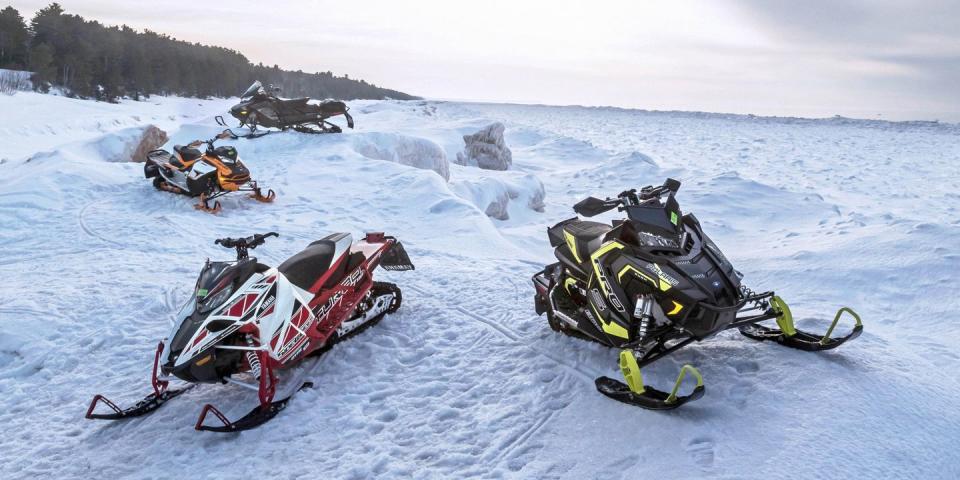
Yeah, winter can be a drag. We gauge the temperature by how fast snot turns from goo to solid ice even though it's still in our nostrils. Months spent hibernating indoors watching SCTV reruns, only emerging periodically to shovel snow, will wear a person down. But anyone who thinks winter sucks probably doesn't own a snowmobile.
Over the past decade, these tracked machines have gone from mere high-performance sleds to absolutely bonkers powder-slewing slingshots. You'd probably need the skills of Gilles Villeneuve, we thought, before their manufacturers would loan you one. Here's how the conversation went:
"Hey, can we borrow your fastest model for a few days? Only one person on staff has any idea what he's doing."
"Sure, how many do you want?"
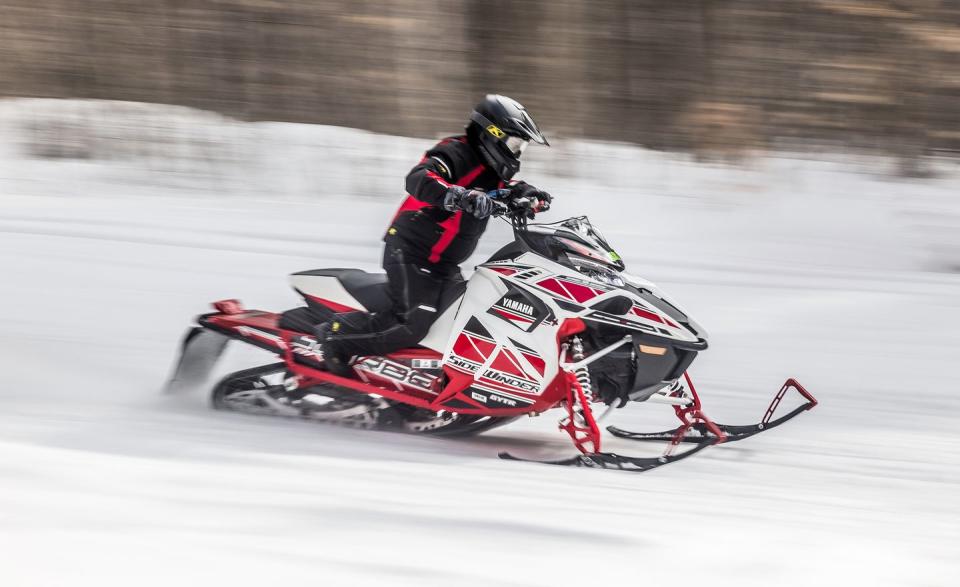
The first to arrive was a Yamaha Sidewinder L-TX LE 50th Anniversary edition. Even at rest, it looks ready to devour more powder than Al Pacino in Scarface. Less knowledgeable staffers' jaws dropped when they learned the turbocharged inline-three, tucked into a sled that weighs just 662 pounds, produces 204 horsepower at a 911 GT3–like 8850 rpm.
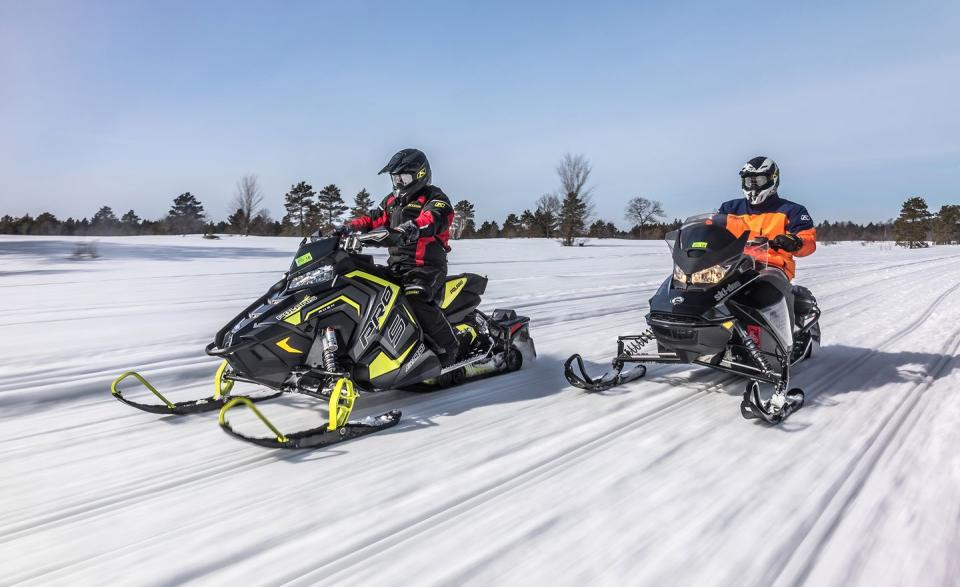
Our next two specimens hail from Canada's Ski-Doo brand. Bombardier Recreational Products is a leader in two-stroke technology and owns Ski-Doo as well as Sea-Doo, Can-Am, and engine brands Evinrude and Rotax. With both port and direct fuel injection-just like the Corvette ZR1!-the 849-cc two-stroke inline-two in the Renegade Adrenaline manages 165 horsepower. To put the Yamaha hypersled in context, Ski-Doo provided a second Renegade powered by a turbocharged inline-three. The company's first boosted four-stroke offering in the snowmobile world, this 899-cc triple is good for 150 horsepower. The Renegade X-RS comes bearing a detuned race chassis wrapped in bodywork that looks as if it had been plucked off a factory race hauler.
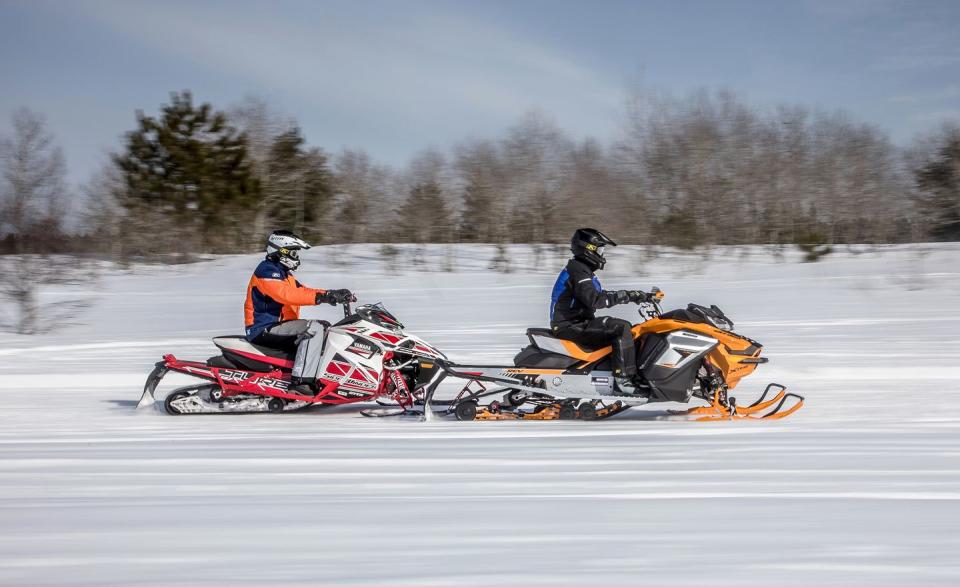
With the trailer loaded, we headed north to the 45th parallel, which dissects Gaylord, Michigan, to pick up our fourth and last snowmobile. The black and lime-green Polaris 800 Rush Pro-S has a very different look from the rest of the machines. It's shorter and narrower than the three others, with bizarro rear-suspension geometry and a stubbier track. It, too, is powered by a two-stroke inline-two, this one using only port injection to produce its 155 horsepower. We tried to include an Arctic Cat in our lineup, but in the days leading up to our adventure, the phone line went silent.

Our initial plan was to embark on a backpack journey from the 45th, ride north to the Mackinac Bridge, pay the toll to be trailered across the Mighty Mac, and continue across the Upper Peninsula (a.k.a. the U.P., home of the world-infamous Yooper) to the shores of Lake Superior. Michigan's weather, however, is more finicky than our long-term Alfa Romeo Giulia Quadrifoglio-which is doing fine at the moment, thanks for asking. Days before our ride, heavy rains decimated the snowpack of the northern Lower Peninsula. So we joined the largest migration of pickup trucks in the U.S., pulling trailers ever-farther north to chase down the white gold.
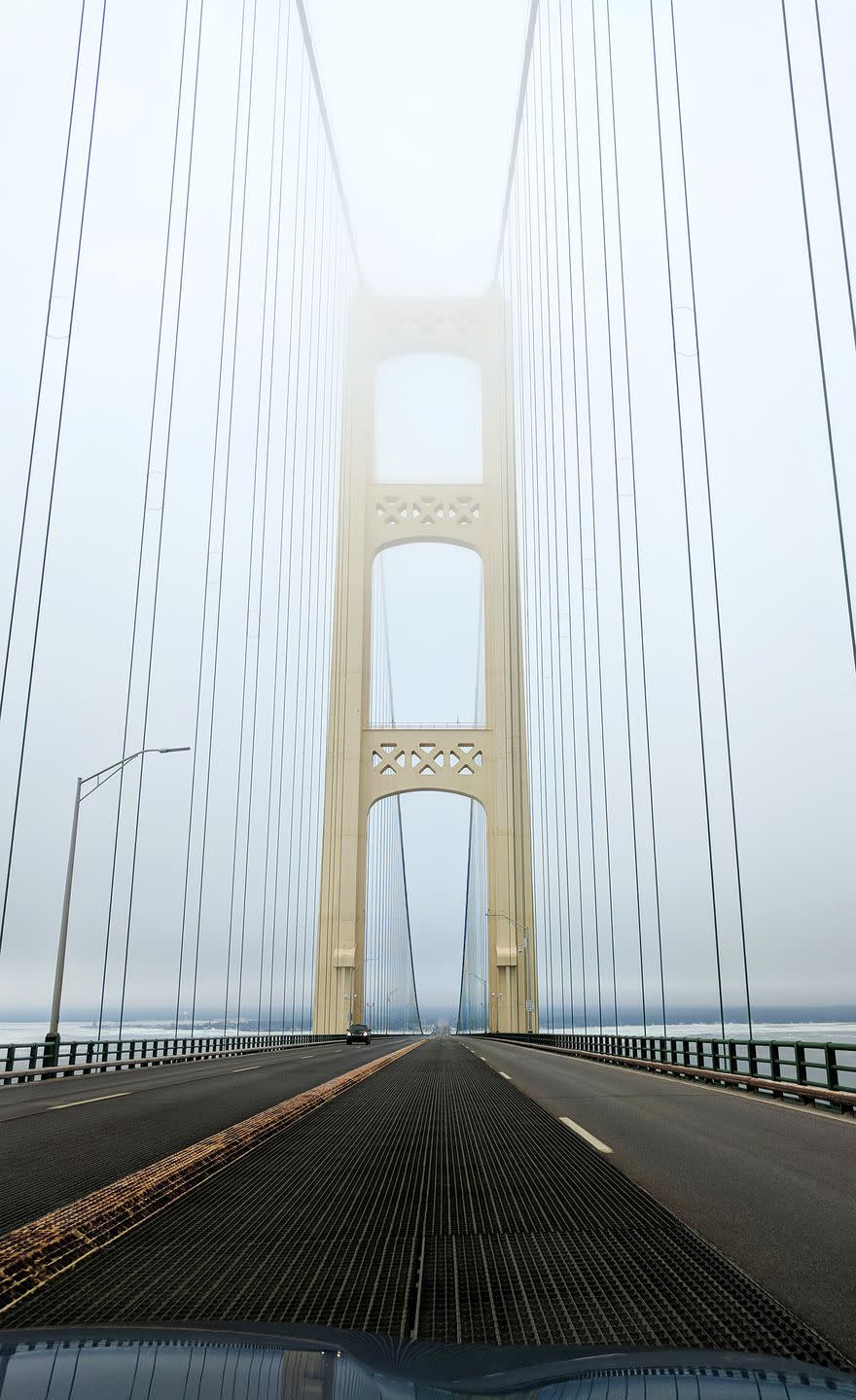
Like the copper prospectors who flocked to the U.P. in the mid-1800s, we strike it rich near the town-and we use that term loosely-of Pine Stump Junction. Not only are the Great Lakes one of the largest sources of fresh water on the planet, in the winter months, they are also massive snow generators. As cold air passes over these warm bodies of water, it scoops up moisture that then freezes in the atmosphere and blankets the shorelines and neighboring communities in fluffy powder. Here, snow isn't measured with a ruler but a yardstick.
But which direction to go? In terms of size, Michigan's 6500-mile trail system ranks sixth in the nation, after those of New Hampshire, New York, Maine, Minnesota, and Wisconsin, the latter two boasting more than 20,000 miles each. Snaking through state and federal lands, with leased portions traversing private tracts, the trail system is funded entirely by its users. An annual permit costs $48, only $1 of which stays with the retailing agent. Forty-seven cents covers the cost of printing and distribution, and the remaining $46.53 goes to fund everything from preseason prep work to equipment, maintenance, and all else involved with the upkeep of thousands of miles of trails. Last winter, Michigan sold 141,850 permits.
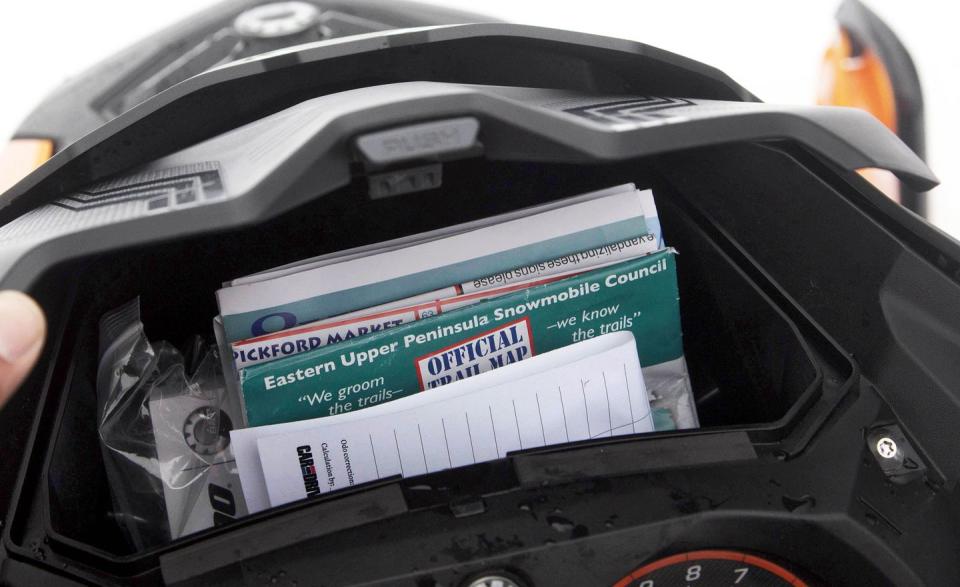
Trails throughout the state are managed by 68 grooming clubs whose members spend their nights out on them, driving tractors dragging specially designed sleds that smooth and condition the snowpack. Groomer operators are mostly volunteers, and their shifts last anywhere from eight to 14 hours. Most clubs groom six days a week. Imagine waking up every morning to find the roads along your commute have been freshly repaved. These operators are the heroes of the snowmobiling world.
We start our trek heading southwest, twisting and turning through this arctic Nordschleife. The entire trail system is essentially one giant race circuit, linked together like a vast neurological network with two-way traffic. With a few exceptions, you more or less pick your own speed limit out here. For some people, it's 30 mph. For others, it's 100. The rule of the trail is: There's no centerline but the right side is mine. Abide by it, because the potential for a control-arm wrestling match is real.
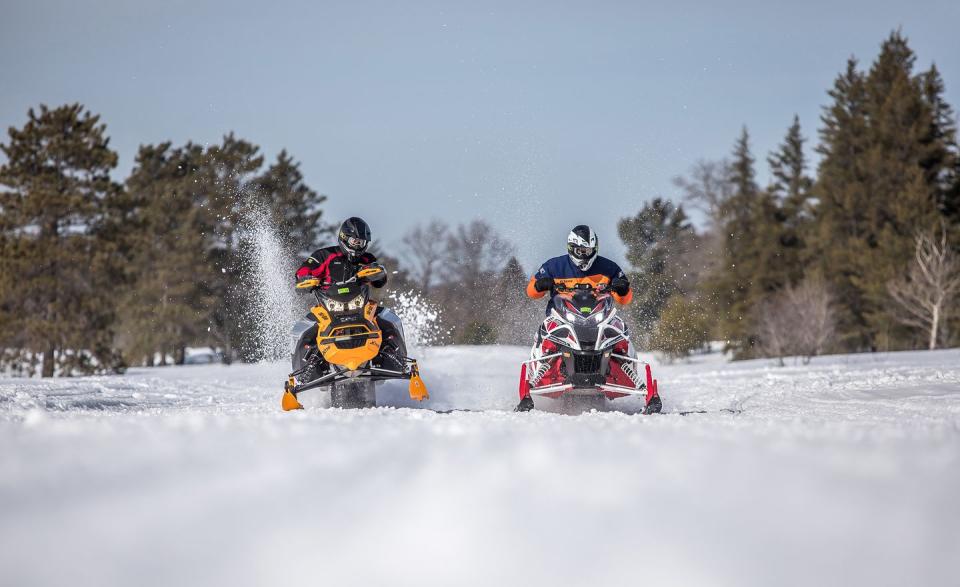
And while even the Nürburgring has Armco barriers, snowmobile trails just have trees. Lots of trees. Countless opportunities to die. It's not uncommon to find plastic body panels propped against-or, more worryingly, lodged in-a tree trunk, a testament to someone's bad day. There are also kamikaze deer, which use these paths to avoid being overworked in the deep snow. The deer look soft, but they're heavy. According to the Michigan Department of Natural Resources, 15 fatalities occurred on snowmobiles in the winter of 2017–2018 in our state, many of which involved solid-object impacts. And also alcohol.
Which isn't that surprising, considering that nearly every trail ends at a bar. Or a brewery, or a casino. Wisconsin's database of snowmobiling fatalities lists the deceased's blood-alcohol level, and most of the figures are, well, sobering may be the wrong word. So's staggering. Stupefying, no; well-anyway. Just plain stupid, how about that?
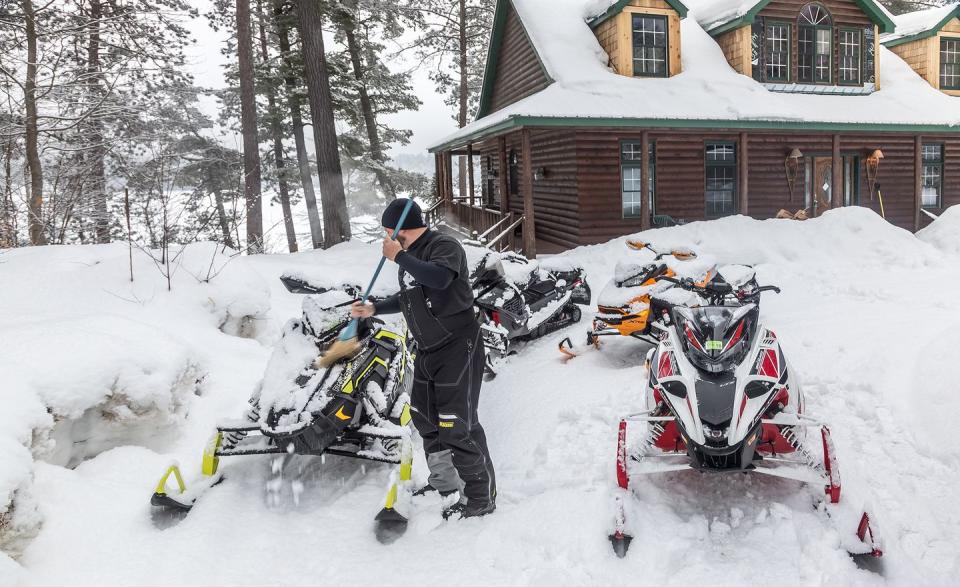
But there is an upside to all this bartending, and it's that these establishments not only provide a place to bench-race and graze on deep-fried salad, they also serve as snowmobilers' quasi-cars-and-coffee meetings, with parking lots and snowbanks lined with machines from various years and manufacturers. And these riders know their stuff. Ski-Doo loaned us the turbocharged X-RS just days after it had officially announced the model, and by the time we returned to the dealer in Gaylord, one of his customers had already texted him a picture of the sled, asking if it was from his inventory. We'd watched the guy take the snap.
The performance of these things is plenty intoxicating. Their weight-to-power ratios are better than any contender's at this year's Lightning Lap. The average zero-to-60 time for our four machines was just 3.6 seconds, and the Yamaha Sidewinder clicked off a 12.2-second quarter-mile. That's quicker than the last Corvette Grand Sport we tested. The Yamaha's heavy nose means it's not as agile as the lighter machines, but on the retired railroad beds known as the northern autobahns, it's a bullet train, a device for generating big speed with ease. The intensity of its ever-present power reminded us of the Nissan GT-R.
As we break to take in the shoreline of Lake Superior, photographer Marc Urbano is laughing in his helmet. He gushes, "I can't get enough of this, it's so awesome!" A background in motorcycle riding is putting him at ease. Creative director Darin Johnson feels differently. "I've never been this terrified in a car," he admits.
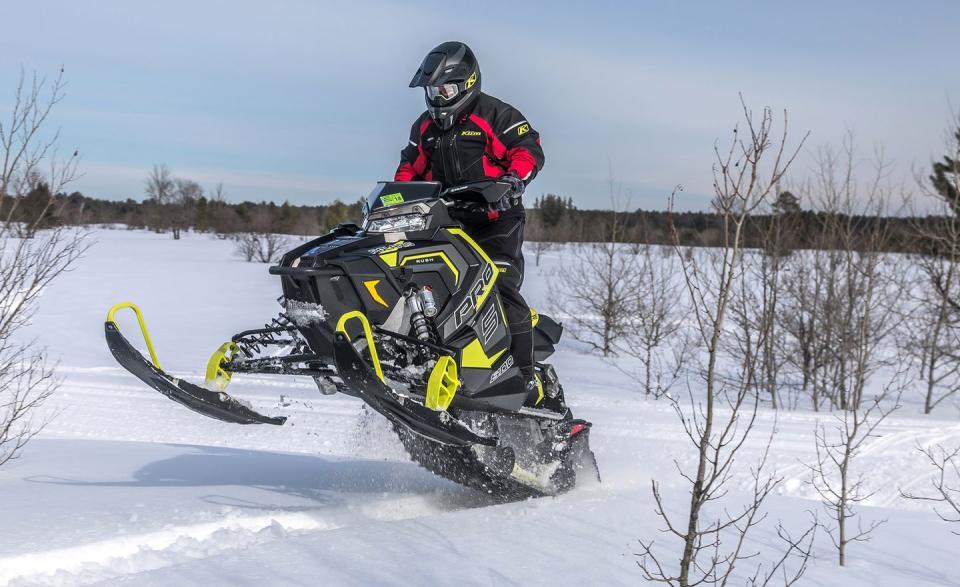
Riding a snowmobile is far more physical than newcomers expect. You don't just sit back and steer-you use your body to bully the rear track around as if you're on a big, stubborn motorcycle. The Polaris is the most playful of the bunch, its motocross-like seating position and shorter track granting the rider better leverage and less resistance to movement. Our novice pilots were least comfortable on it, but for someone with a little experience, it's a hoot to shoot from corner to corner, listening to the gasp of air rushing through the intake. Polaris's 794-cc engine isn't as refined as Ski-Doo's two-stroke, and it has a mighty thirst for gasoline. (Unfortunately, the brand's new 840-cc mill was unavailable at the time of our ride.) But while its engine lags in tech, the Polaris came with an optional infotainment system that cleverly integrates a digital speedometer and tachometer, trail maps, Bluetooth-audio controls, and the ability to record throttle inputs and rpm to assist in fine-tuning the CVT clutching.
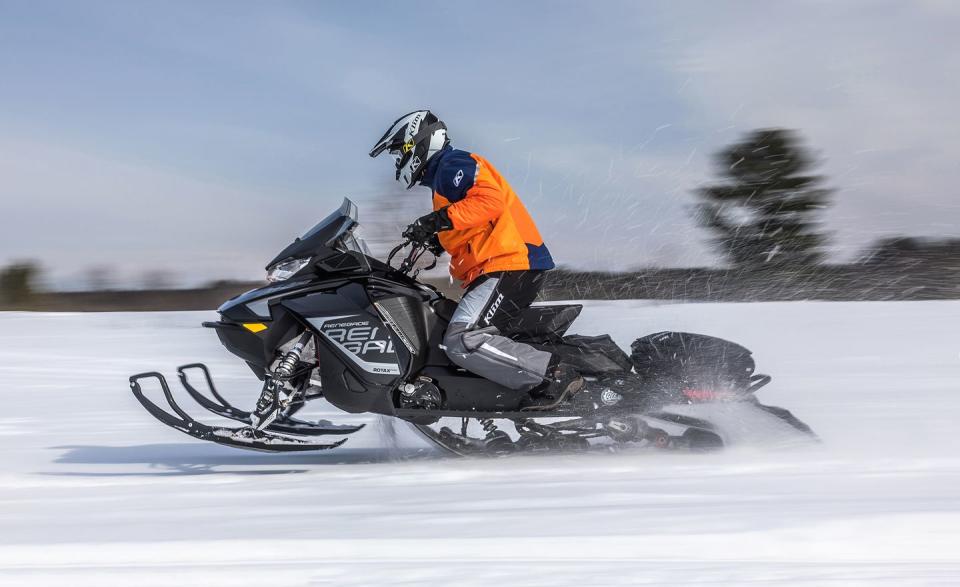
Though we encountered very few rough stretches out in the woods, trails tend to converge on the shoulders of the roads leading into and out of towns, and these are often rippled with wicked ice moguls. Ski-Doo's Renegade X-RS chassis shrugged them off best. If you ride scared stiff like Johnson, the terrain will beat soreness into muscles you didn't know you had. It's best to remain relaxed and let the beefy KYB piggyback dampers eat up the rough stuff. Just give the turbocharger a second to bring on the power. The X-RS's throttle-by-wire setup takes a moment to process what the thumb is asking of it, and it tended to give more power than we wanted. When it does wake up, there's plenty of power down low.
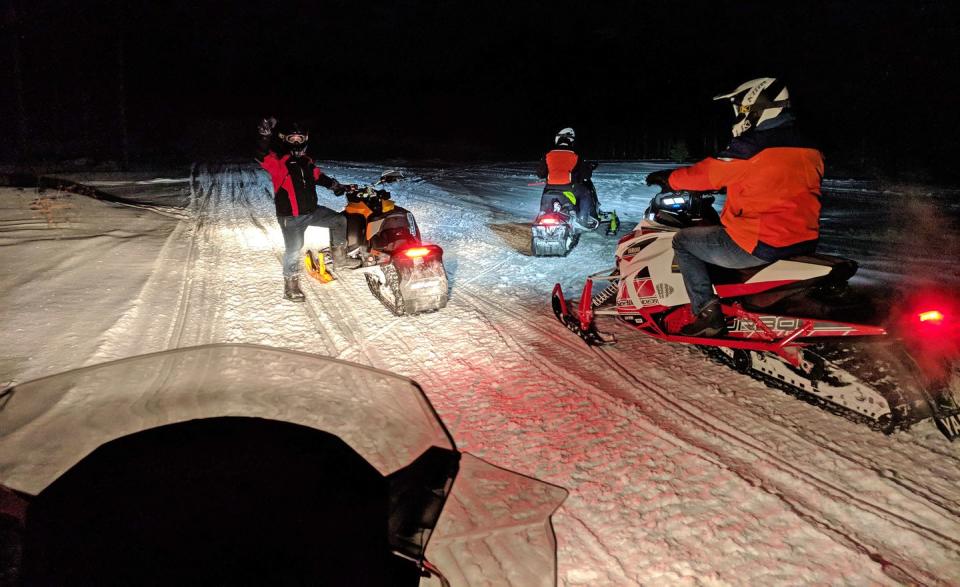
Our unanimous favorite was the Ski-Doo Renegade Adrenaline. Executive editor Jared Gall climbed off the machine and noted: "I know it sounds ridiculous, but this engine reminds me of the Ferrari V-12. It's so linear and shrieks toward redline with such towering power. I never would have expected that from a snowmobile." It's also efficient, a clear winner in our observed fuel economy. The dialed-back chassis is marvelous, with not one rider lodging any complaints. The tapered tunnel and contoured body panels allow for a large range of motion, helping the rider boss the rear end around, and foot hooks let him lock in a boot for extreme MotoGP leans.
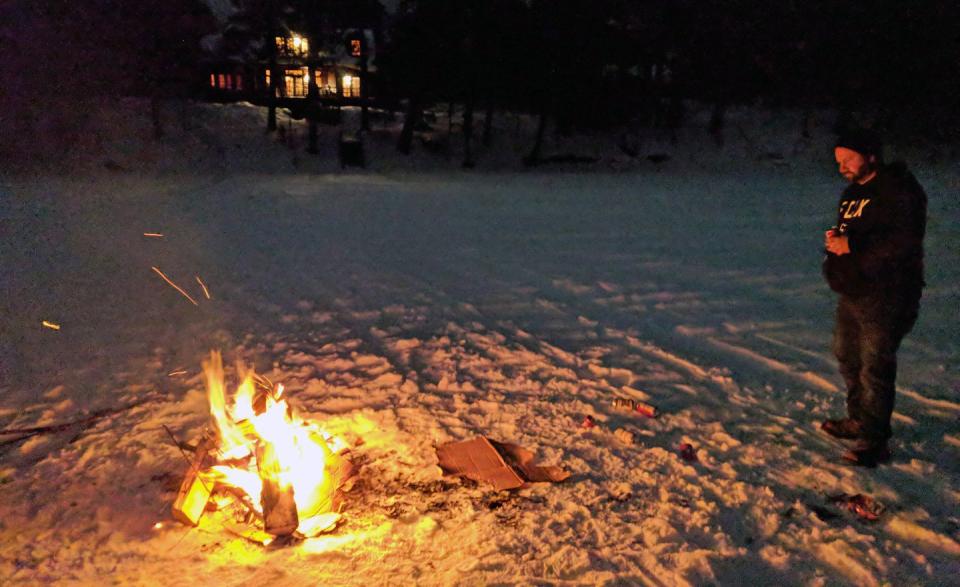
At the end of the day, it's time to stand around a fire on the lake with some frosty suds and dissect our experience. Gall is determined to hit 100 mph on a snowmobile and sets off across the lake on the Yamaha. He succeeds, and then gets stuck trying to turn around on a steep hillside on the far shore. With nothing else to disturb the peace and the crisp night air to carry the sound, we can hear him cursing and muttering in the woods nearly a half-mile away. We let him struggle for a few minutes before setting off to help, headlights slashing the darkness and wailing engines shattering the silence.
That's the wonder of snowmobiling. Like track driving, it focuses the mind, and when the noise and speed stop, the natural beauty and quiet flood in. Sometimes you've got to get lost to get found, speed up to slow down, make a little noise to find true peace. Silly snowbirds, flocking south. Winter is not something to skip out on; it's something not to be missed.
From the December 2018 issue
('You Might Also Like',)

 Yahoo Autos
Yahoo Autos 
